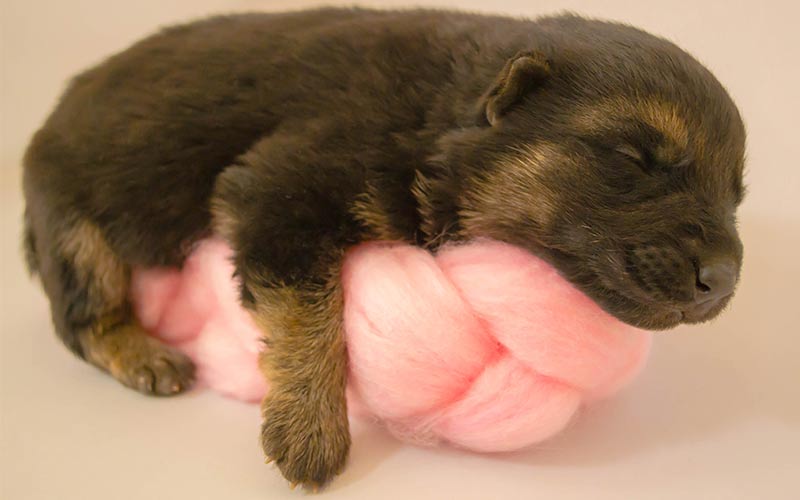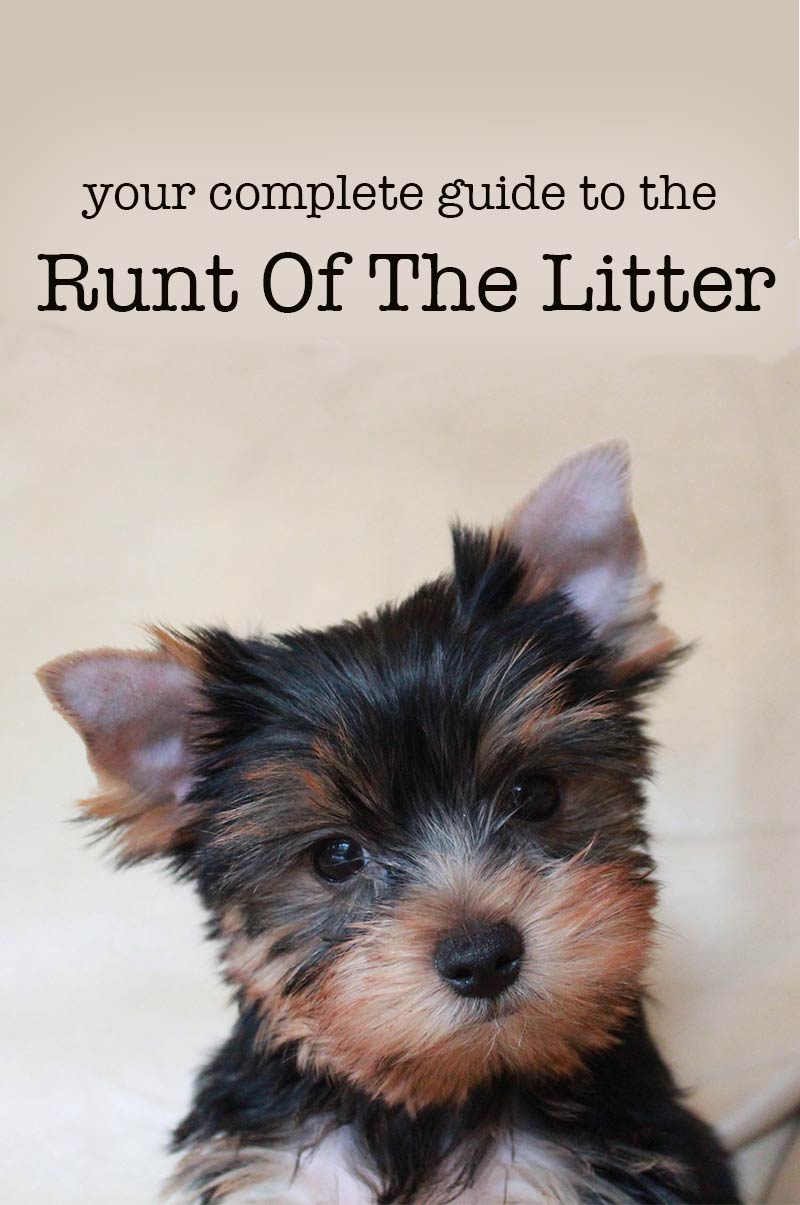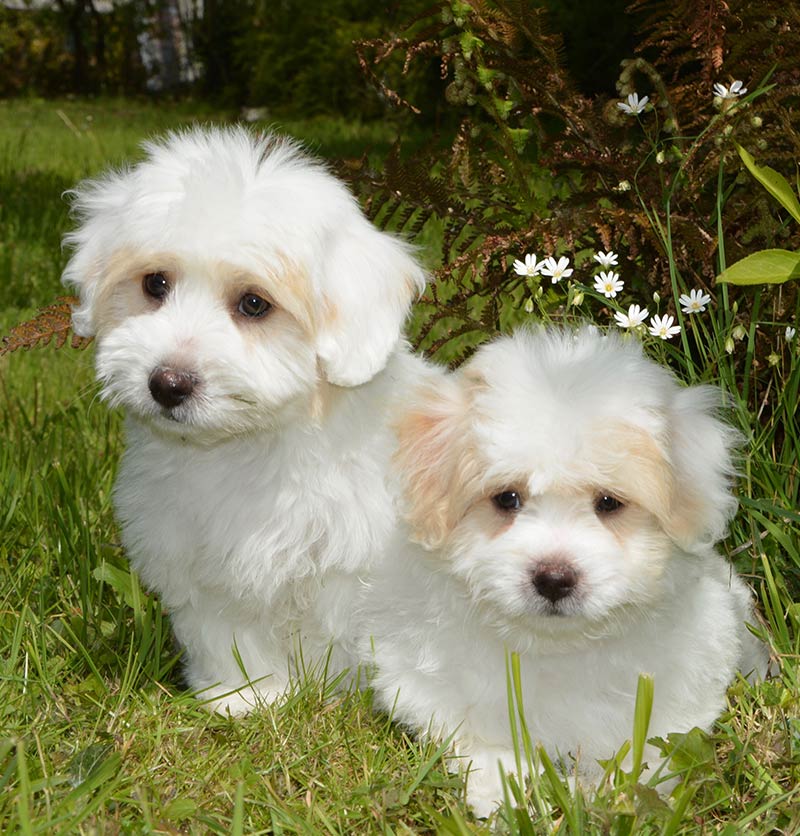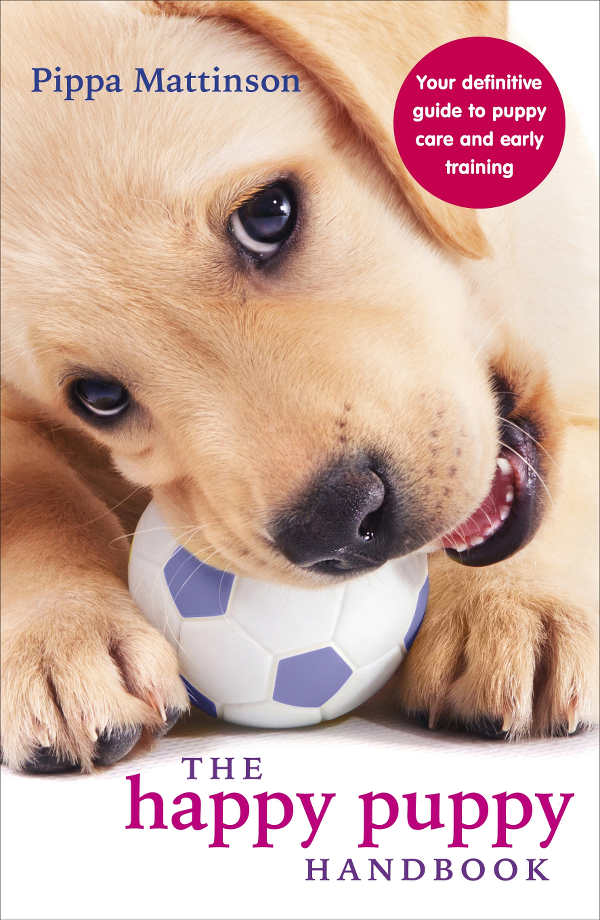We Just Feed It and Do Its Litter

The runt of the litter doesn't just mean the smallest puppy in your new pack. The smallest puppy in most litters is just as healthy as it's siblings, and meets the average measures for height and weight for a newborn dog. The runt of the litter is a puppy that is far tinier than the average newborn dog of that breed. Today we'll look at whether runt puppies need any special care to keep up with their litter mates. And we'll examine what implications being the runt of the litter has on a dog's development, personality and long term health.
Contents
- What is the runt of the litter?
- Why are there runts in some litters?
- Runt puppy problems
- Caring for the runt of the litter
- Feeding, warming and protecting the runt of the litter
- Runt puppy growth and development
- Does the runt of the litter stay small?
- Adopting or buying a runt
Does your puppy seem a lot smaller than his litter mates? Are you worried that the tinest dog might have the biggest problems? Then check out our complete guide to the runt of the litter. We are going to explain what is meant by a puppy being the runt of the litter.
Runt Dogs Are Cute But Be Careful!
Our mental image of the runt puppy in a litter can stir up some mixed emotions. As defenceless newborns, they grab hold of our instinct to protect small and vulnerable things. In books, TV and film, runt animals are often plucky survivors who become popular heroes. But when it comes to actually bringing a runt puppy home… suddenly their small size can become intimidating.
Is a runt puppy bad? Are the odds so stacked against them that you're destined for heartbreak? These are good questions, so let's find out the answers.
What is the Runt of the Litter?
It's important to begin by clearing something up. In everyday speech, we often say "the runt" simply when we mean the smallest puppy in a litter. Being the smallest puppy in a litter isn't necessarily a bad thing, provided they're still within the healthy weight range for their breed and age, and growing at an appropriate rate. In this context, the word runt is being used in an affectionate and teasing way, and there aren't many implications for the puppy.
Defining the Runt of the Litter
However sometimes a newborn puppy's birth weight is abnormally low – falling outside their healthy range for their breed. This is the traditional meaning of being a runt, as a breeder would understand it. And by this definition, a litter can have more than one runt! In fact, all the puppies with an abnormally low birth weight are runts.
These puppies often struggle to gain weight after birth and are slow to reach important developmental milestones. So in this context, being a runt puppy takes on an urgent medical dimension, which we'll focus in this article.

Why Is There A Runt In Some Litters?
Underweight puppies are not uncommon, so it helps to understand why they haven't reached the right size before birth. There's a common misconception that runts are conceived later than their full-sized litter mates, so effectively they're born prematurely.
Whilst it is possible for puppies within a litter to be sired by more than one father, the eggs fertilized later catch up with the other embryos quickly in the very earliest stages of pregnancy. It's a remarkable phenomenon.
Runt Puppy Development
In fact, puppies' birth weight is determined by their inherent capacity for growth. As well as the supply of nutrients they receive from their mum while in the womb. A runt puppy might have failed to develop quickly enough because of a congenital defect which impeded their growth. Or their placenta might have embedded in an unfavorable spot on their mum's uterus, so they didn't get quite as many nutrients as they needed from her. Once a puppy is outside the womb, a congenital defect might become apparent, or (more likely) it may never be clear why a puppy was born underweight.

What Happens To Runt Puppies?
If a puppy is small but healthy, then with a little care, the consequences of their size should be minimal. Newborn puppies are completely dependent on their mother for at least the first three weeks of their life. Sometimes – especially in large litters – it can be a battle to get enough attention from mum. The breeder might need to be on hand to make sure no puppy gets left out. She will need to look out for smaller pups getting knocked of the teat, and help them latch back on at teat near the mum's tail, where her milk supply is richest.
Small puppies might also benefit from a heated pad underneath them, or a heat lamp over the whelping box. We will look in more detail at this later. The breeder will need to watch her female dog with her smallest puppies carefully for any sign that you need to intervene and help her look after them.
Problems With The Runt Of The Litter
Sadly when a puppy is abnormally underweight at birth, they are likely to be confronted with many more problems. It's estimated that around one in fifty puppies are stillborn or die in the first six weeks of life due to being too small.
Across all breeds of dog, low birth weight consistently increases the chances of a puppy dying. The more underweight they are, the more at risk they become. A 1978 study at Kansas State University found the risk of dying increased significantly in puppies more than 25% below the average birth weight for their breed. Rather than invest in a lost cause, female dogs will often reject an abnormally small puppy from birth, to conserve energy for feeding and caring for her remaining puppies.
Runt of the Litter Health
As we already touched on, a runt puppy might be small because of an underlying congenital problem. On top of this, their small size makes them vulnerable to further health problems outside the womb.
Top of the list in their first few days are dehydration and hypothermia as they compete with their siblings for food and warmth. A female dog's first milk, called colostrum, is rich in antibodies which protect her puppies from infection until they receive their first vaccinations. On top of everything, a runt puppy who misses out on this milk is more susceptible to life-threatening bacterial infections.
One thing you don't need to worry about – runt disease
Incidentally, if you turn to the internet for help with your runt puppy, you make come across the term "runt disease". Runt disease is a genetic problem experienced by some experimental animals in laboratory settings – it is not a problem for runt puppies!
Caring for the Runt of the Litter
Now let's look at what it takes for a runt puppy survive and thrive. The MOST IMPORTANT thing for a breeder to do is work closely with their vet, and listen carefully to their advice.
All of the puppies should be checked over by a veterinarian in their first couple of days, to identify any problems early. At this check up, the vet will be able to help you distinguish those puppies who are perilously underweight from those who are small but healthy. They will also give detailed instructions for any puppies who need special care.
Feeding the Runt of the Litter
First things first, newborn puppies quickly become dehydrated and hypoglycemic if they don't get enough milk. If a runt puppy is too small to latch on to their mum, your vet might advise you to express her milk by hand into sterilized cup and feed the puppy with sterilized bottle or syringe. Alternatively they might recommend a suitable brand of puppy formula.
If you're reading this as a breeder and it is before your litter is born, now is the right time to find out which equipment and formula is best for your breed, and collect a small stockpile. Human baby formula and cows milk are not rich enough enough in calories or protein for puppies. Only ever give puppies milk approved by their vet.
Keeping Runt Puppies Warm
Puppies have no mechanism for keeping themselves warm when they are born. After giving birth, a female dog's mammary glands are only one degree cooler than her core temperature, so that when are puppies are close enough to feed, they gain warmth as well. Away from their mum, small puppies lose heat faster because they have a large surface area relative to their size.
Make sure the room your puppies are staying in is kept warm (86-89ºF), and that the runt puppy doesn't get pushed away from their mum by bigger siblings. Your vet might also recommend using a heat pad or heat lamp to help a runt puppy stay warm.
Protecting The Runt Of The Litter From Infection
If your runt puppy doesn't manage to get any colostrum from their mother, your vet might recommend extra precautions to protect them from infection. These might include starting vaccinations earlier than usual.
What To Do If Your Runt Puppy Isn't Growing
Newborn puppies should be weighed every day so that a puppy who is gaining weight too slowly, or who suddenly stops gaining weight, can be examined by a vet and given extra help as promptly as possible. Critical milestones in a young pup's life include the first three days after birth, weaning onto solid food at twelve weeks, and leaving their mum and litter mates to go to a new home. It's vital to monitor their growth through all of these landmarks, in case a congenital problem comes to light.
Making difficult decisions for the runt of the litter
Even though it's heartbreaking to think about, bear in mind that it is normal for some puppies in every litter not to survive. For some runt puppies, developmental problems which began in the womb simply can't be overcome. Talk candidly with your vet about an undersized puppy's long term health prospects and life expectancy. Nobody wants to feel like they've let down a baby animal they brought into the world, but your vet can help you make make tough decisions about what's kindest for a very sick puppy.
Do Runt Puppies Stay Small?
Let's go back to runt puppies who are small but healthy (hooray!) and find out more about the qualities of the smallest pup in the whelping box. Are you tempted to bring home the smallest puppy from a litter in the hope they stay petite into adulthood? For example, a Labrador might be a bit big for your home, but a little Labrador might just fit?
Well a puppy who's small but healthy before weaning usually catches up with their litter mates once they start eating solid food. Indeed, online dog forums are awash with anecdotes from owners who brought home the smallest puppy in the litter, then watched in disbelief as they reached the highest weight ranges for their breed. So a small but healthy puppy is by no means guaranteed to become a smaller than average dog. You have been warned. (Sorry!)
Runt of the Litter Personality
If this list of runts in popular culture tells us anything, it's that we love to project lots of special qualities onto a runt dog. However, there's no evidence to suggest that being the runt of the litter has any real-life bearing on a dog's temperament or disposition as they grow up.
In conversation, it's true that owners are unanimous about how their runt dog is truly one of a kind. But let's face it, aren't all dog owners? It's just love speaking (as it should!) So a runt dog can inherit any of the personality traits of their breed, and researching those is still the best way to get a feel for the nature of the dog you're bringing home.

Buying the Runt of the Litter
Our special fondness for runts means that many of us will one day search specifically for a runt puppy to bring home. If that just means the smallest but healthy puppy, then no problem. But think very carefully before bringing home a puppy who was significantly underweight at birth.
Is a Runt Puppy Bad?
Many dog breeders believe that a responsibly-reared litter of puppies shouldn't have any runts. Abnormally small puppies who are likely to suffer health complications in future, or could pass on congenital problems if they survive and breed are often euthanized at birth.
At the other end of the spectrum, some VERY irresponsible breeders and puppy farms are all too keen to sell malnourished and underweight runt puppies. In fact, they try to sell them for more money than a healthy puppy from the same litter, by passing them off as special teacup varieties.
Before bringing home an undersized runt puppy, ask to talk directly with their vet about their health. A caring breeder will not have any objection to this. Ask yourself if you can afford any additional vet care a runt might need over the course of their life. Check with you pet insurer if it will be covered.
Runt of the Litter
Runt puppies hold a unique appeal in our hearts. We want them to thrive so that we can share in their triumph. Sometimes a runt is the smallest, but healthy, sibling. But some runts are dangerously underweight, and this can be caused, or accompanied, by very real health problems.
The most important resource for giving a runt puppy the best care and quality of a life is a great vet. Not every runt puppy will make it, but those that do will have a special story for the rest of their lives.
Was your Dog the Runt of the Litter?
How does their size now compare to other dogs in their breed? Have they had any health problems associated with their birth weight? Please share your experiences with out other readers thinking of getting a runt of the litter puppy using the comments box below.
More Dog Care Guides
- Do Dogs in Heat Smell Bad?
- Grooming my Labradoodle
References
- Mosier, J. E., "The Puppy from Birth to Six Weeks", The Veterinary Clinics of North America, 1978.
Source: https://thehappypuppysite.com/runt-of-the-litter/
0 Response to "We Just Feed It and Do Its Litter"
Postar um comentário